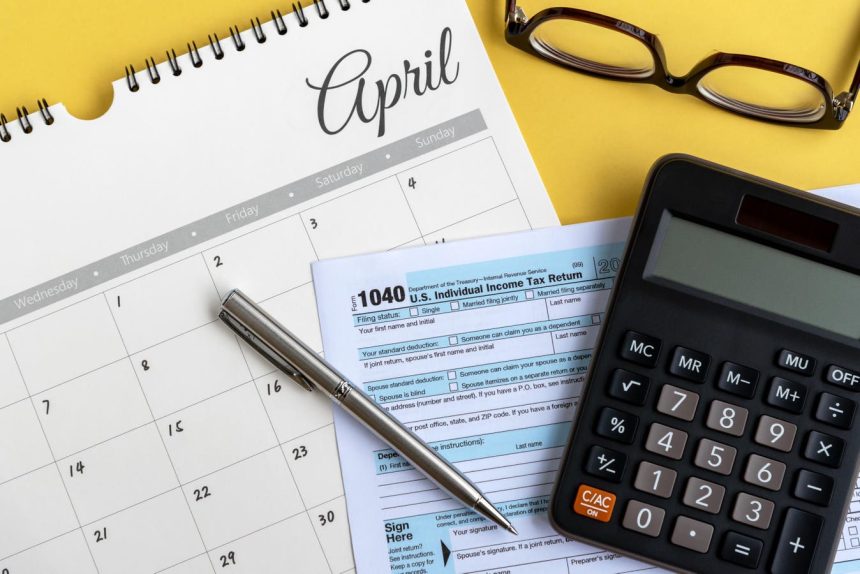Tax Day has come and gone, concluding the often stressful tax season during which individuals and businesses finalize their financial accounts and report their incomes. While completing tax returns might seem like the end of financial duties for the year, it opens new opportunities for enhancing financial health and planning.
The period following Tax Day provides a crucial window for reflecting on the past year’s tax outcomes and preparing for the next fiscal year. Explore the following steps to optimize tax and financial planning beyond April.
Review Your Tax Return
This is a critical step in ensuring you’ve paid only as much tax as necessary, not a cent more. It provides an opportunity to verify the accuracy of what was filed, understand your financial picture better, and prepare for the upcoming year more effectively.
Begin by comparing this year’s return to the previous year’s. Look for any significant differences in income, deductions, and credits. Identify any sections that led to unexpected results or tax liabilities.
For example, if your charitable contributions decreased significantly, plan to raise them next year if financially viable. Or if you’ve had large capital gains, consider if you can offset them with any losses or spread the gain over multiple years to lower tax brackets.
You should also check if you’ve maximized contributions to retirement accounts like IRAs or 401(k)s, which can reduce taxable income. If you or your dependents are in school, examine whether you’re eligible for educational credits, such as the American Opportunity Credit or the Lifetime Learning Credit.
Document all potential opportunities and plan to incorporate them into the coming year’s tax strategy. Consider using tax software for a second review to ensure nothing is overlooked. Tax software can often find additional deductions or credits through its systematic review process.
“Better yet, consult a tax professional,” recommends Ashley Owens, an advisor from 11 Financial. “They can offer personalized advice based on an in-depth understanding of tax law and your specific financial situation. They can also provide strategic advice on tax-saving opportunities for future years and help with more complex tax situations, such as those involving self-employment or multiple income sources.”
Set Goals For The Year Ahead
Setting precise goals is crucial for effective tax planning and overall financial health. Define what you want to achieve financially within the next year. Goals might include saving for a down payment on a house, preparing for a major purchase, or reducing overall debt.
Tedd Shimp, ChFC, suggests, “You can employ the SMART method. Ensure your goals are specific, measurable, achievable, relevant, and time-bound. For instance, rather than simply aiming to ‘save more money,’ you can set a goal to ‘save $5,000 in an IRA for the year.’”
Once your goals are set, align your tax planning to support them. “Suppose you’re in a 24% tax bracket and can contribute the $5,000 to a traditional IRA. This reduces your taxable income by $5,000, potentially saving you $1,200 in taxes.
“Remember, your IRA contributions grow tax-deferred until withdrawal in retirement, allowing your money to accumulate without annual tax hits,” explains Shimp.
Tailoring your tax strategy to your financial objectives helps you achieve them faster and optimizes your overall financial planning.
Additionally, remember that your financial landscape can change unexpectedly due to various factors such as a job change, health issues, or fluctuations in the economic environment.
Therefore, it’s crucial to maintain flexibility in your financial goals and adapt as needed. Review and adjust your goals and tax planning strategies periodically, ideally every quarter.
This ongoing review allows you to respond proactively to any changes and ensures your financial plans remain aligned with your current circumstances.
Explore Tax-Saving Opportunities
One of the key strategies in financial planning is optimizing your investments for tax efficiency. This involves selecting investments that generate the least tax liability.
Consider tax-advantaged accounts like Health Savings Accounts, Flexible Spending Accounts, and 539 college savings plans for various benefits. Assess your current and future needs to determine which accounts best serve your financial goals and start contributing accordingly.
Financial advisor Steve Goffner adds, “Municipal bonds can be an excellent choice for those in higher tax brackets as the interest from these bonds is often exempt from federal taxes, and possibly state taxes if the bonds are issued in an individual’s state of residence.”
Another method you may consider is tax-loss harvesting, which involves selling securities at a loss to offset a capital gains tax liability on other investments. The key is to replace these securities with similar ones to maintain a consistent investment strategy.
“Tax-loss harvesting can be particularly effective in volatile markets where some investments may have declined in value,” expounds Goffner.
Implementing tax-loss harvesting requires careful planning and consideration of the wash-sale rule, which disallows a tax deduction for security repurchased within 30 days before or after its sale.
Furthermore, it’s essential to remain proactive about identifying and utilizing tax deductions and credits throughout the fiscal year.
For instance, if you work from home, you may be eligible for a home office deduction. This deduction can include a portion of your housing-related expenses, such as rent, utilities, and internet service, based on the percentage of your home used for business.
Keep detailed records of all potential deductible expenses and charitable contributions throughout the year. Additionally, stay informed about new and expiring tax credits that might affect your tax situation, such as energy credits for home improvements.
Organize Tax Documents And Records
Set up a dedicated filing system, either digital or physical, where all tax-related documents are stored. Categorize documents into clearly labeled folders such as income statements, deductible expenses, and investment records.
Use reliable software or cloud services to store and easily access your documents securely for digital storage. Consider setting reminders for quarterly reviews of your documents to ensure everything is captured and accurately filed throughout the year.
It is essential to keep meticulous records of deductible expenses, charitable contributions, and investments. Retain receipts, bank statements, and charity acknowledgment letters for expenses and contributions.
For investments, maintain records of purchase dates, costs, sales, and reinvestments, which are critical for calculating capital gains or losses. This detailed documentation will support your claims in case of an audit and help you maximize potential deductions and credits on your tax returns.
An organized system for handling tax documents greatly simplifies the tax preparation process. Maintaining up-to-date records and a clear organizational system can minimize the time spent preparing for tax season and reduce the likelihood of errors on your return.
Final Thoughts
Following the steps above can help you navigate the post-Tax Day period and prepare for the upcoming fiscal year.
Nonetheless, you must remember to stay informed of tax laws and regulations since they are subject to legislative amendments and revisions, which can significantly impact your financial planning.
Regularly check official sources like the IRS website or subscribe to newsletters from tax professionals who can provide timely updates on new tax regulations.
Additionally, financial news websites often discuss the implications of these changes in a broader economic context, which can help you understand how changes in tax law might affect the economy and your finances.
Remember that your fiscal responsibilities do not end with Tax Day. Proactive and continuous tax and financial planning is essential for ensuring long-term success.
Read the full article here
















